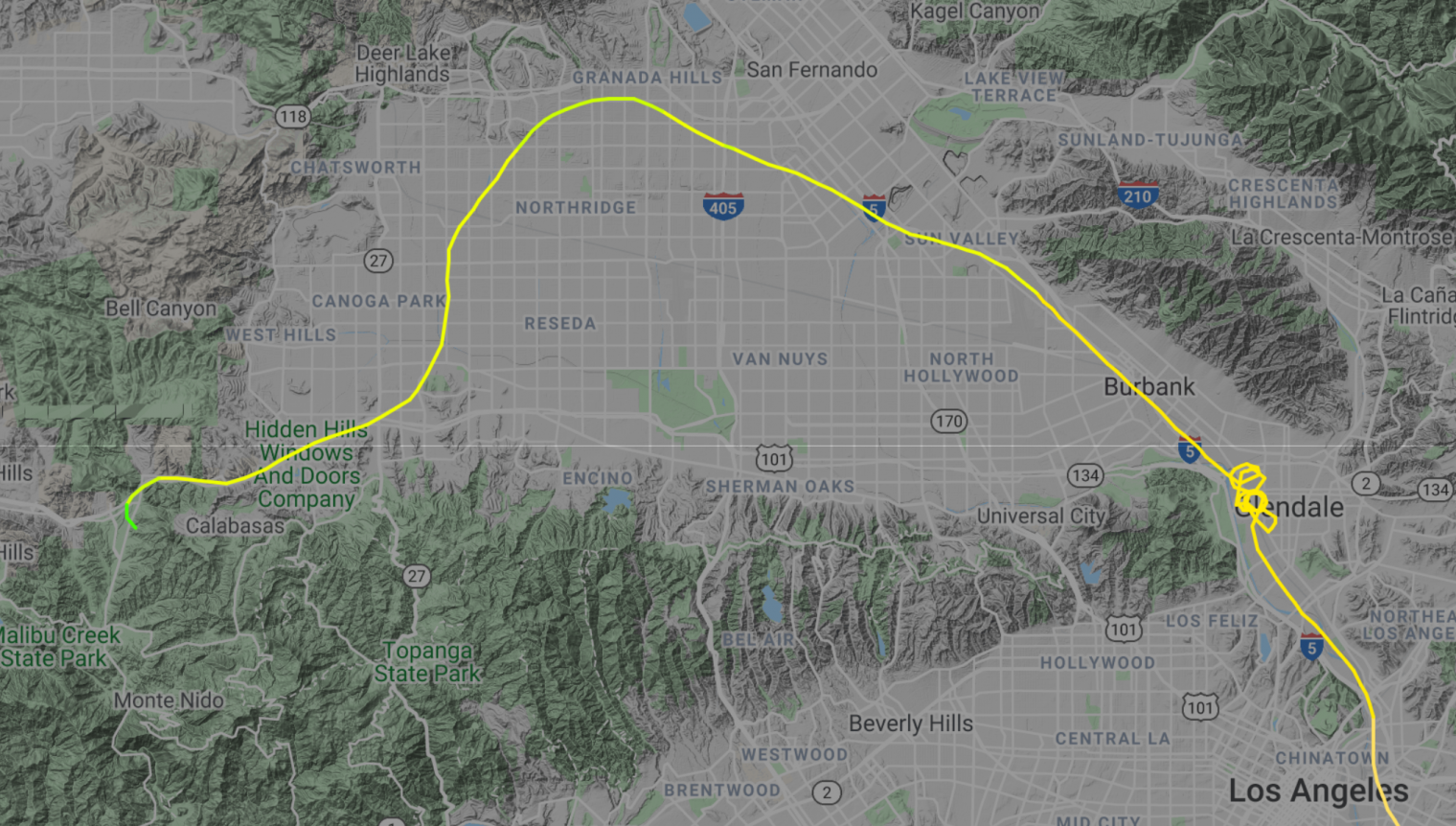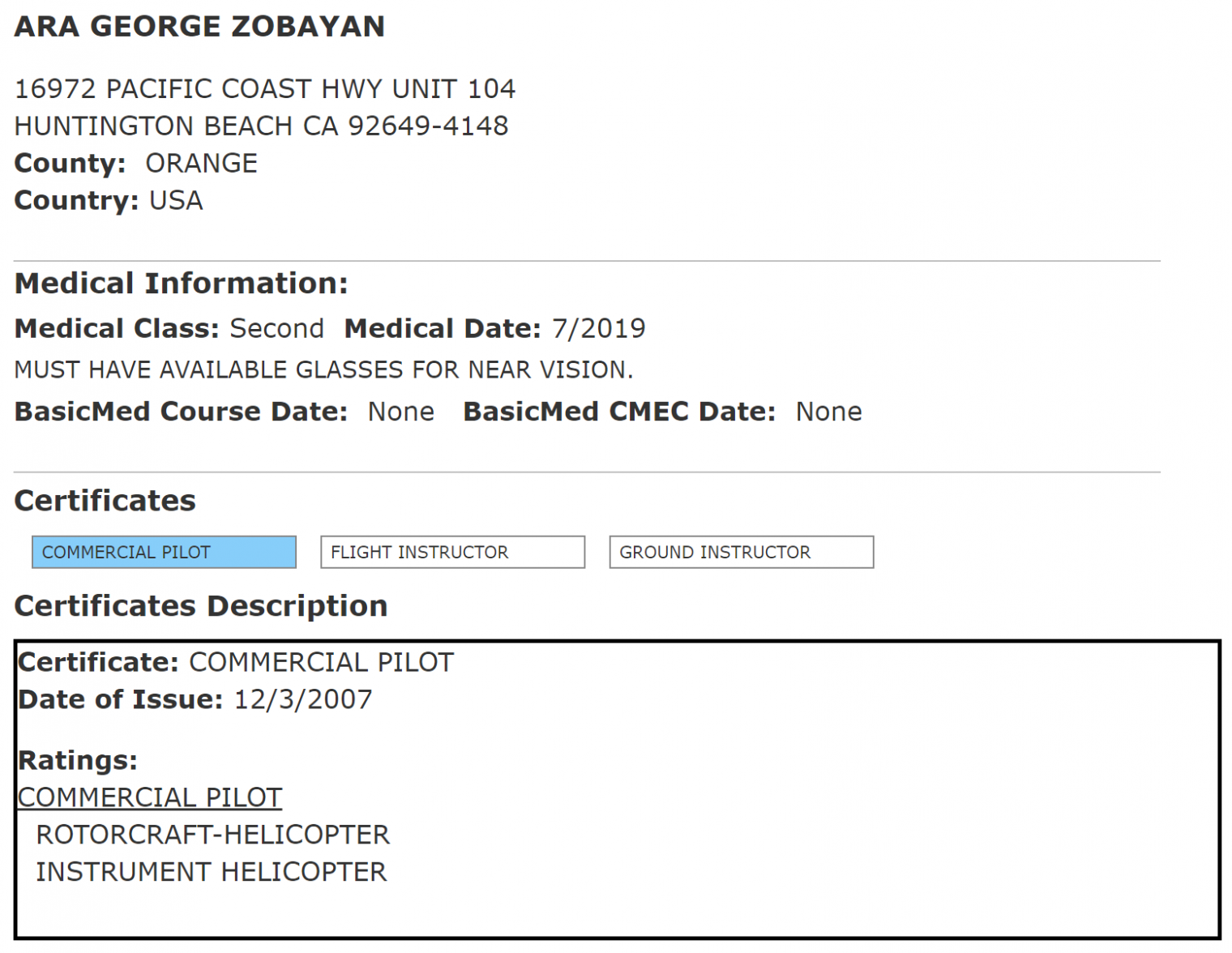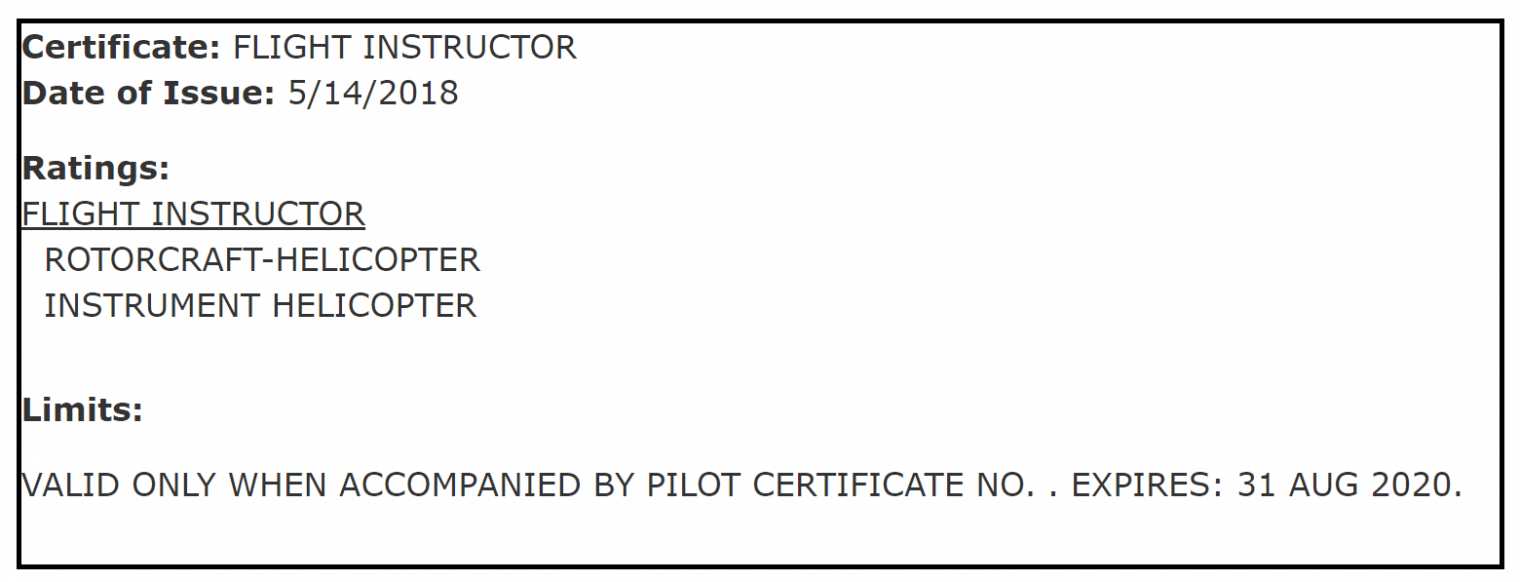Friends have been asking me about the Sikorsky S-76 helicopter crash that killed Kobe Bryant today. weather.com says that the crash occurred on January 26 close to 10:00 am and that conditions were cloudy/foggy.
Calabasas, California is between the Burbank and Camarillo airports. Here are their respective weather reports from around that time (10:00 am California time is 18Z). Burbank was right on the edge between visual and instrument flying conditions:
KBUR 261753Z 00000KT 2 1/2SM HZ OVC011 12/09 A3016
Translation: Burbank airport, 26th of the month, 17:53 UTC (9:53 am Pacific Standard Time), wind calm, 2.5 miles of visibility (“statute miles”), haze, temperature 12C, dewpoint 9C, altimeter 30.06. The nearly adjacent Van Nuys, airport, …
KVNY 261751Z 00000KT 2 1/2SM HZ OVC013 12/09 A3016
(almost identical)
Camarillo, closer to the coast, was slightly better:
KCMA 261755Z 03003KT 4SM HZ OVC017 15/11 A3019
26th at 1755Z (9:55 am), wind from 030 (NE) at 3 knots, 4 miles of visibility, haze, overcast clouds at 1,700′.
Over the hill at the Santa Monica airport that Californians are always getting into fights about?
KSMO 261751Z 12003KT 5SM HZ OVC018 14/09 A3018
(Translation: Santa Monica airport, Jan 26 at 17:51Z (9:51 am local time), wind from the southeast (120) at 3 knots, 5 miles of visibility in haze, clouds 1,800′ above the airport, temperature 14C, dewpoint 9C, altimeter setting 30.18.)
Assuming that it was bad weather that led to this accident, the engineering question is “Why couldn’t the $10 million helicopter fly itself away from obstacles, the way that a $400 DJI drone can?”
A Sikorsky is equipped with multiple computer-readable attitude sources so that the onboard processors know whether the machine is pitched or banked. It has multiple GPS position sensors so it knows where it is. It has at least one terrain database so it knows where the obstacles are. It has autopilot servos capable of maneuvering the aircraft. Why doesn’t it have the intelligence to say “You’re about to hit something, would you like me to take over and fly away from these obstacles and park on the ramp at the Van Nuys Airtel so that we can all relax?”
From flightaware.com:

The track log shows a rapid climb during the last minute of the flight, perhaps an attempt to climb away from terrain (ignore the “PM” after the time; FlightAware translated to Eastern time):

Skyvector chart for the area in question:

Note the red circle indicating a temporary flight restriction around the crash area. Also note the “5.2” above the red circle, indicating that one has to be 5,200′ above sea level in order to clear all of the obstacles in this part of the chart. (Google Earth shows that the highest terrain near the media-reported crash site of the 4200 block of Las Virgenes Rd. in Calabasas is around 1,100′)
An alternative presentation of transponder (ADS-B) data from flightradar24:

A YouTube video puts together the flight’s track with Air Traffic Control communications (presumably from liveatc.net). The pilot reported being at 1,400′ or 1,500′ above sea level. The Burbank and Van Nuys airports are 800′ above sea level. So this was 600-700′ above the ground (low for an airplane, but within the realm of normal for a helicopter) and thus, if the cloud layer had a flat bottom and the weather reports over 1,100’+ ceilings were accurate, the helicopter should not have been in a cloud.
The pilot had held an instrument rating since 2007, though it can be difficult to maintain instrument proficiency in helicopters, which are seldom flown IFR:
He also held a flight instructor certificate, which has to be renewed every two years. He was qualified to act as an instructor for instrument flying in helicopters:
Related:
- “New York helicopter crash: why not robot intelligence?”, which concludes “We expect so much of our phones and so little from our aircraft”


Yahoo Poster who claims to be a helicopter pilot w 42yrs experience posted this: pilot was scud running in hills with cloud on the ground and clipped a hill top hard, spinning down into the canyon. Pictures of impact area show a very hard high speed impact with the bird shredded into small pieces. Hot dog pilot pushing VFR flight in IFR conditions. Radar track shows him quickly going from 2300ft to 1200ft trying to squeeze between the ground and the cloud.
DG: I don’t know how the helicopter could have gone from 2,300′ to any other altitude. The flightaware.com track, above, does not show that the helicopter ever got above 2,000′ (and that was only at the bitter end as, presumably, part of a terrain avoidance maneuver).
It looks as though the helicopter was in reasonable conditions at 1,400′ near the VNY airport but then descended to stay under a lower cloud area and then, perhaps, encountered a cloud, thus resulting in the failure to follow the 101 as planned.
Kind of surreal when the ATC guy says “you’re too low”, the radio goes dead & the ATC guy knows it’s going to be 1 of those days. Blancolirio was convinced the 180′ turn was an attempt to escape the weather & showed the clouds being below the mountains.
“too low for flight following” or “too low for radar coverage” is a normal situation for a helicopter. From the YouTube video there is no situation in which ATC says that the helicopter is too low for the terrain.
Thank you for sharing the link to the liveatc communications. A very sad final four minute eulogy to the death of five people.
Never go below fog/ cloud unless you have positive info on fog/ cloud clearance or ground contact, or else you may enter a tunnel of no joy. Best stay above n plan alternate.
They were in a hold for about 12 minutes while in contact with the Burbank tower. I wonder if the delay had some effect on the pilot’s judgment (i.e., made him impatient/hasty)? In other words, I wonder if the marginal weather combined with the hold might have made him anxious to “get there.” It’s a relatively short hop in that Sikorsky.
From USA Today: low clouds and fog in the area prompted the sheriff’s office to ground its helicopters Sunday morning. The Los Angeles Police Department took similar precautions.
Accidents are often the result of a chain of events/choices.
What might have prevented the crash:
-Not fly, drive the whole way
-File IFR to CMA
-Stop at VNY and drive from there
-Two pilots (one for flying and the other for communications)
-Go slower
from TMZ: L.A. weather was extremely foggy Sunday morning, and law enforcement sources tell us even LAPD air support was grounded because of it. Flight tracker data shows Kobe’s chopper appeared to first encounter weather issues as it was above the L.A. Zoo. It circled that area at least 6 times at a very low altitude — around 875 feet — perhaps waiting for the fog to clear . . .
The pilot eventually headed north along the 118 freeway before turning to the west, and started following above the 101 freeway around Woodland Hills, CA.
At around 9:40 AM they encounter more weather — as in seriously heavy fog — and the chopper turned south. This was critical, because they turned toward a mountainous area. The pilot suddenly and rapidly climbed from about 1200 feet up to 2000 feet.
However, moments later — around 9:45 AM — they flew into a mountain at 1700 feet. Flight tracker data shows they were flying at about 161 knots.
From the ATC recording, the hold was waiting for the SVFR clearance to get past Burbank. The north bound path was I-5 and 118 was west bound past VNY. They would want to follow 101 to get to their destination but it goes through some hills with some turns at the area of the crash. At the speed they were traveling, the hills may not appeared until it was too late. Perhaps the pilot was distracted by having to communicate with the CMA airport. It only takes 1 minute to travel 3 miles at 180 mph so there is not much time to use up the visibility. A panic response to climb (into the clouds) could lead to loss of control even to a skilled pilot.
Phil –
Do you have any ideas why the pilot might not have filed for IFR given the low ceilings? Is that common in point-to-point heli ops?
As someone who has flown rotary and stuck wing for a living at various times, it’s been my observation that scud running is just part of helicopter culture in the US. A lot of helicopter guys have minimal actual IMC time, even instructors. The R-44 that many/most helicopter pilots learn to fly instruments in isn’t even certified for IFR flight. It also takes a lot longer to pick up a clearance than it does to just jump in and go, especially considering the complexity of obtaining an IFR clearance from an off-airport origin and destination. Scud running is a long-standing and known problem within the US helicopter industry.
Joe,
Follow-up question: wouldn’t this helicopter have been equipped with a “synthetic vision” PFD? Why not just continue to (illegally?) “fly VFR” while looking at the synthetic vision instead of out the window when you suddenly get clouded-in? Or is that something helo pilots also don’t practice?
As Joe points out, scud-running is kind of the default for helicopters in the U.S. A 1500′ ceiling would cause an airplane pilot to file IFR, but if you’re not planning to go more than 700′ above the terrain, why bother? Then you think “well, 1100 is lower than 1500, but it is still enough”…
Also, if you do file IFR, how do you get to your actual destination? There are instrument approaches to transition from en route to airports, but not to the typical school or private home or office building or wherever. Some hospital helipads have approaches, but otherwise IFR only gets you from airport to airport.
Why no synthetic vision? You can get it almost for free in various phone apps and portable electronics. FAA certification hurdles make it expensive for a simple Cessna or Robinson and super expensive for something like a Sikorsky or airliner.
The WSJ is reporting that the helo’s destination was Carmarillo airport, not an off-airport landing area.. So perhaps IFR would have been a better plan? If we admitted to ourselves that computers would probably be better than humans at both piloting and controlling aircraft movements, we could probably increase safety and efficiency in this area.
Dave: if true, that’s definitely sad. Airport to Airport is a job for an airplane! Would have been easy in a PC-12. Not any faster, but certainly the pilot of any PC-12 would be instrument-proficient.
Previous day the same flight was to CMA and back. Even IFR in the helicopter would have avoided terrain. The helicopter probably had an autopilot that would have done the whole thing to a hover at the destination.
Apparently the helicopter company was operating under Part 135 but was only authorized to fly VFR – so the pilot could not file IFR even if he thought it was a good idea. So even thought the pilot was certified to teach instrument flying in a helicopter he probably didn’t have much recent experience with flying into weather.
Dumb question: if you were flying from point A to point B in a helicopter and there was fog, why wouldn’t you just go straight up until you were at an altitude where you knew you wouldn’t hit anything, go to Point B, and then go straight down? Isn’t that the great thing about being in a Helo? Why would you be so low in the first place?
Inadvertently punching into the clouds happens very fast and you may only have seconds to turn away from terrain. The need to establish an instrument scan and thus maintain aircraft control is a competing demand that eats into the time available. The RADAR data shows that the pilot tried to climb above the terrain but just didn’t have enough time.
jimbo: That’s the kind of thing that a drone would do. Helicopters when fully loaded, though, don’t have enough power to go straight up or straight down. It uses a lot less power to approach and depart at an angle, maintaining at least 15-20 knots of forward speed (max efficiency occurs closer to 55 knots).
There is a regulatory problem that arises. You’re not allowed to have the machine use its terrain and obstacle database to compute an ad hoc path for each landing. To get near the ground you must follow an established instrument approach procedure, which takes years for humans to develop.
Get thereitis can be a killer
Several teenage girls with their parents rendezvous-ing at airport. Who guesses someone ran late similar to JFK, Jr’s sis-in-law delaying departure from Manhattan in Friday afternoon traffic to Teterboro. Such a sad outcome.
It would be so nice if people (TMZ) didn’t explain things as if they are certain that prove to be non factual.
If you aren’t 100% positive about what you are saying, either say nothing or preface it with something along the lines of “my guess is,” or “I believe that,” or “my understanding is.”
News footage of the accident site shows the hilltops in the clouds. The hilltops in the vicinity of the crash were ~1200’ MSL. The reported ceiling at VNY was 1100’, which is ~1900’ MSL. They encountered lower than reported ceilings and crashed because of it. When I’m flying in smallish mountains like those, I‘ve learned to never run the valleys when the clouds are at or below the peaks because you’ll inevitably get squeezed out in the passes. I also learned to fly down the side of the valley rather than the middle and slow to Vmini so that I have the room and radius of turn to turn around. It all could have been prevented by just picking up an IFR clearance but for a number of reasons helo guys hate doing that and so they CFIT.
Here’s a link to an interview of one very observant eyewitness to the crash. According to the eyewitness, the helicopter hovered above him in the clouds before heading off in an easterly direction and then crashing into a nearby hill about 20 seconds later…
Thanks, Peter. Eyewitness reports have been unreliable in some previous crashes. For aerodynamic stall/spin accidents, for example, witnesses may say that they heard the engine quit before the airplane hit the ground. Subsequent investigation will show that the engine was operating normally right up to the impact. The ADS-B data from the accident helicopter, e.g., viewable at flightaware.com (link in original post), shows a speed of over 100 knots, not hovering.
Unfortunately it appears that this helicopter lacked both a flight data recorder and cockpit voice recorder. So we probably won’t even know those details for sure.
Why didn’t the pilot slow down to 50-60 MPH to give him more time to see obstacles? People who drive in bad weather in cars slow down so they can maneuver around obstacles.
Was wondering that as well, since copter was traveling at 161 knots right before it crashed into hillside, according to “flight tracker data.” Was the extended hold over Glendale the reason the pilot was in more of a hurry? (the warm-up time for the girls’ basketball game was known)
bill: That is a good general idea. The closer to obstacles, the slower, and the worse the visibility, the slower. It must have looked at least reasonably good under that cloud layer for the pilot to have maintained a standard S-76 cruising speed.
Suzanne: https://flightaware.com/live/flight/N72EX/history/20200126/1708Z/tracklog does not show a dramatic speed difference at any point in the flight except during their hold near Burbank. They started out at 150 knots and, per Bill’s suggestion, had slowed down to 125-145 knots shortly before the accident.
It’s difficult to slow down when you cannot tell which direction is up or down.